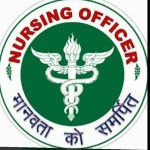Neonatal Infection
The new born baby does have poor immunity so the new born baby is always at a greater risk of developing infection. Some of the commonly developed infection in the new born baby are as follows
1. Ophthalamia neonatrum
2. Oral thrush
3. Omphalitis
1. Opthalamia neonatrum
The opthalamia neonatrum is a very common type of infection of the new born baby, in which the Conjuctiva becomes infected & inflamed.
The opthalamia neonatrum is a type of Conjuctivitis.
Causes
Mostly the Conjuctivitis in the new born baby is caused by
• Neisseria gonorrhoea bacteria during birth
• Streptococcus bacteria via touching new born's eyes with contaminated hands or clothes.
Clinical Features
• Redness of eye
• Excessive tears commonly present
• Blepharitis (swollen eyelids)
• Excessive crying
• Photophobia
Diagnosis
• Ophthalamia neonatrum can be easily identify by direct inspection of the new born baby.
• Laboratory examination of the eye discharge can also be performed to identify the causative bacteria.
Treatment
• Antibiotics eye drop used for thr treatment of bacterial infection such as cefotaxime, ceftriaxone, ciprofloxacin
• New born baby's eyes are frequently cleaned by using warm normal saline & cotton swabs.
• Dim light is maintain in the unit of the new born baby.
• Breast feeding is promoted.
• Parents are taught about care of new born baby.
2. Oral thrush & moniliasis, candidiasis
The oral thrush is also a very common type of infection of the new born baby, in which white coloured granules develops in the oral cavity of the new born baby. The oral thrush is also known as Moniliasis or candidiasis.
Etiology
The causative agent of the candidiasis is candida albicans.
The candida albicans can reach into the oral cavity of the new born baby via
• Unhygienic breast feeding
• Bottle feeding
Clinical features
The common clinical features of the oral thrush are as follows
• White coloured granules appears over the tongue, inner side of the lips or cheeks.
• These granules looks like curd granules when we try to erase the granules, it doesn't happen & if scratched hardly, then bleeding may occur.
• The new born baby is unable to breast feed properly.
• Excessive crying
Diagnosis
The diagnosis of the oral thrush is performed by direct examination of white coloured granules.
Treatment
• Antibiotics can be given to the new born baby.
• Oral hygiene is maintain properly.
• 0.25% solution of potassium permagnet (KMno4) is used to clean the oral cavity of the new born 5 - 6 time in a day.
• Mother is advised to maintain breast hygiene.
3. Omphalitis
The omphalitis is a type of new born baby infection, which is characterized by inflammation of umbilical cord stump.
Etiology
The common cause of omphalitis is bacterial infection. The risk of bacterial infection is increased.
• Touching of umbilical cord stump with contaminated hands or clothes.
• Applying ghee or oil or talcum powder over the umbilical cord stump.
• Washing the umbilical cord stump with soap & water.
Clinical features
• Redness of the umbilical cord stump.
• Redness around the umbilicus.
• Pus discharge is also common.
• Fever may also develop.
• Excessive crying of the baby.
• Poor breast feeding.
Diagnosis
The diagnosis of the omphalitis is confirmed by direct inspection of the umbilical cord stump.
Treatment
• Antiseptic ointment are applied over umbilical cord stump.
• KMno4 is also applied over the umbilical cord stump (0.50%)
• Umbilical cord is kept dry & nothing is applied over it like ghee, oil, talcum powder, turmeric powder etc.
• Oral antibiotics can be given to new born baby.
• Breast feeding is provided.



You must be logged in to post a comment.